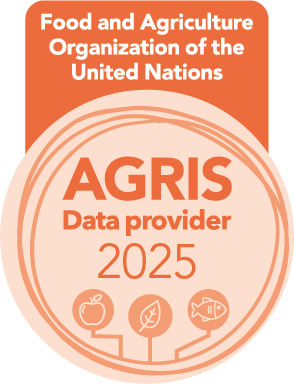

Address: Naberezhnaya Severnoy Dviny, 17, Arkhangelsk, 163002, Russian Federation, Northern (Arctic) Federal University named after M.V.Lomonosov, office 1425
Phone: +7 (8182) 21-61-18
E-mail: forest@narfu.ru
http://lesnoizhurnal.ru/en/
|
The Structure and Condition of the Tree Layer of Indigenous Spruce Forests of the Subtundra Zone in the Pechora River Basin. P. 26–41
|
 |
Manov A.V., Kutyavin I.N.
UDС
630*182.22:582.475.2(282.247.11)
DOI:
10.37482/0536-1036-2025-5-26-41
Abstract
Dynamic processes in indigenous spruce phytocenoses have been studied in the challenging climatic conditions of the subtundra zone, moderated by the heat brought from the south by the waters of the large Pechora River. Field material has been collected on permanent sample plots during 3 periods (2005–2006, 2013, 2022) in spruce forests of different types. The dynamics of the size structure and vitality status of woody plants in indigenous spruce forests have been analyzed based on the variability of tree stem diameters at a height of 1.3 m and the height of undergrowth. The data obtained show that with an increase in the average diameter of spruce trees in stands of subtundra spruce forests of different types, the coefficient of variation increases. The distribution of trees by absolute diameter classes is characterized by a slight stretch, usually with 1 maximum shifted to the left. In spruce forests developing on swampy-podzolic soils, most of the trees belong to small diameter classes (≤10 cm). In spruce forests of the green-moss type group, the interval of diameter classes is extended due to the presence of large trees in the stands. This dimensional structure is typical for the indigenous spruce forests of the middle taiga. The distribution of the total stand of timber by diameter classes is described as a pulsating curve with a single maximum, which, in some cases, may be interrupted at larger diameter classes. The size of the undergrowth has turned out to be more variable over time. Under the canopy of stands of subtundra spruce forests, a continuous renewal process is being observed. Stationary monitoring of the viability and damage of trees and undergrowth, based on a visual assessment of the plant by the crown, has shown an improvement in both the upper layers of the tree canopy and the lower layers of the undergrowth. The stand and undergrowth, which have been characterized as weakened at the beginning of the observation, moved into the healthy category during the monitoring period. The results of the research are part of the environmental monitoring of self-regulating spruce forests in the Pechora River basin. Long-term scientific work on permanent sample plots allows us to study the variability of plant communities and their response to global change, which contributes to a deeper understanding of the mechanisms underlying these changes, as well as ways of adapting to them. The data obtained will serve as a basis for further environmental monitoring and forecasting of the state of self-regulating Pechora forests.
Authors
Aleksey V. Manov*, Candidate of Agriculture, Research Scientist; ResearcherID: P-9089-2015,
ORCID: https://orcid.org/0000-0002-5070-0078
Ivan N. Kutyavin, Doctor of Biology, Senior Research Scientist; ResearcherID: P-9829-2015,
Acknowledgements: The work was carried out within the framework of the state assignment for the Institute of Biology of Komi Science Centre of the Ural Branch of the Russian Academy of Sciences no. 125020501547-8. The authors are deeply grateful to Kapitolina Stepanovna Bobkova, Doctor of Biology, under whose guidance the objects were laid and research was started on them, as well as to the staff of the Department of Forest Biological Problems of the North of the Institute of Biology of the Komi Science Centre of the Ural Branch of the Russian Academy of Sciences, who participated in the collection of field materials.
Affiliation
Institute of Biology of Komi Scienсe Centre of the Ural Branch of the Russian Academy of Sciences, ul. Kommunisticheskaya, 28, GSP-2, Syktyvkar, Komi Republic, 167982, Russian Federation; manov@ib.komisc.ru*, kutjavin-ivan@rambler.ru
Keywordssubtundra zone, dynamics, size structure, indigenous spruce forests, vitality status, stand, undergrowth
For citation
Manov A.V., Kutyavin I.N. The Structure and Condition of the Tree Layer of Indigenous Spruce Forests of the Subtundra Zone in the Pechora River Basin. Lesnoy Zhurnal = Russian Forestry Journal, 2025, no. 5, pp. 26–41. (In Russ.). https://doi.org/10.37482/0536-1036-2025-5-26-41
References
- Alekseev V.A. Forest Ecosystems and Atmospheric Pollution. Leningrad, Nauka Publ., 1990. 200 p. (In Russ.).
- Bebiya S.M. Differentiation of Trees in the Forest, Their Classification and Determination of Their Vital Status. Lesovedenie, 2000, no. 4, pp. 35–43. (In Russ.).
- A Report on Climate Features on the Territory of the Russian Federation in 2018. Moscow, Roshydromet Publ., 2019. 79 p. (In Russ.).
- Evdokimov A.S., Yarmishko V.T. The Tree Layer Structure of Forest Communities of the Kola Peninsula Central Part Formed When Aerotechnogenic Emissions Reduced. Vestnik RUDN. Seriya: Ekologiya i bezopasnost’ zhiznedeyatel’nosti = RUDN Journal of Ecology and Life Safety, 2023, vol. 31, no. 1, pp. 115–126. (In Russ.). http://doi.org/10.22363/2313-2310-2023-31-1-115-126
- Ziganshin R.A. Evaluation of Confidence of Observations during Forest Taxation. Lesovedenie, 2017, no. 6, pp. 464–477. (In Russ.). http://doi.org/10.7868/S0024114817060109
- Katyutin P.N., Gorshkov V.V. Vitality, Growth Rate and Aboveground Phytomass of Pinus sylvestris (Pinaceae) in Middle-Aged Northern Taiga Forests. Rastitelnye resursy, 2020, vol. 56, no. 2, pp. 99–111. (In Russ.). https://doi.org/10.31857/S0033994620020065
- Kashin V.I., Kozobrodov A.S. Larch Forests of the European North of Russia. Arkhangelsk, Arkhangelsk Branch of the Russian Geographical Society of the Russian Academy of Sciences, 1994. 222 p. (In Russ.).
- Kozubov G.M. Biology of Fruiting of Conifers in the North. Leningrad, Nauka Publ., 1974. 135 p. (In Russ.).
- Indegenous Spruce Forests of the North: Biodiversity, Structure, Functions. St. Petersburg, Nauka Publ., 2006. 337 p. (In Russ.).
- Forest Ecosystems and Atmospheric Pollution. Ed. by V.A. Alekseev. Leningrad, Nauka Publ., 1990. 200 p. (In Russ.).
- Lipka O.N., Korzukhin M.D., Zamolodchikov D.G., Dobrolyubov N.Yu., Krylenko S.V., Bogdanovich A.Yu., Semenov S.M. A Role of Forests in Natural Systems Adaptation to Climate Change. Lesovedenie, 2021, no. 5, pp. 531–546. (In Russ.). https://doi.org/10.31857/S0024114821050077
- Manov A.V., Kutyavin I.N. Tree Storey Structure and Condition Dynamics in Middle-Taiga Native Spruce Forests of the Northern Ural Foothills. Lesovedenie, 2023, no. 6, pp. 587–595. (In Russ.). https://doi.org/10.31857/S0024114823050054
- Manov A.V., Kutyavin I.N. Monitoring of Forest Lands: Textbook. Syktyvkar, Syktyvkar Forest Institute Publ., 2023. 52 p. (In Russ.).
- Methods of Studying Forest Communities. St. Petersburg: Institute of Chemistry of St. Petersburg State University, 2002. 240 p. (In Russ.).
- Mozolevskaya E.G., Sharapa T.V. Some Results of Application of the Index of Plantation Condition in Monitoring. Lesnoy vestnik = Forestry Bulletin, 2003, no. 2, pp. 142–145. (In Russ.).
- Pakhuchiy V.V., Pakhuchaya L.M. Capacity and Regeneration of Subtundra Forest Stands in the Komi Republic. Izvestiya Komi nauchnogo tsentra Ural’skogo oteleniya Rossijskoj akademii nauk. Seriya: Sel’skokhozyajstvennye nauki = Proceedings of the Komi Science Center of the Ural Branch of the Russian Academy of Sciences. Series: Agricultural Sciences, 2022, no. 6 (58), pp. 71–77. (In Russ.).
- Pristova T.A., Manov A.V., Zagirova S.V. Estimation of Stock of Organic Substance of Ground Vegetation and Forest Litter of Spruce and Birch Phytocoenoses in the Subpolar Urals. Rastitelnye resursy, 2016, vol. 52, no. 2, pp. 282–294. (In Russ.).
- Robakidze E.A., Torlopova N.V. Monitoring of the Spruce Forests Status under Pollution from Pulp and Paper Mill Emissions. Rastitelnye resursy, 2018, vol. 54, no. 1, pp. 42–58. (In Russ.).
- Semenov B.A., Tsvetkov V.F., Chibisov G.A., Elizarov F.P. Subtundra Forests of the European Part of Russia: Nature and Management. Arkhangelsk, Press-A Publ., 1998. 332 p. (In Russ.).
- Solov’ev V.M., Solov’ev M.V. The Growth and Differentiation of Woody Plants – Ecological and Biological Basis for the Study and Formation of Stands of Forest Ecosystems. Agrarnyyj vestnik Urala = Agrarian Bulletin of the Urals, 2012, no. 2 (94), pp. 44–47. (In Russ.).
- Tarkhanov S.N., Pinaevskaya E.A., Aganina Yu.E. Features of Adaptation of Different Forms of Scots Pine under Conditions of Prolonged Excessive Soil Moistening. Lesnoy Zhurnal = Russian Forestry Journal, 2021, no. 2, pp. 30–44. (In Russ.). https://doi.org/10.37482/0536-1036-2021-2-30-44
- Utkina I.A., Rubtsov V.V. Modern Ideas about the Impact of Climate Change on Interactions of Forest Trees and Phytophagous Insects. Lesnoy vestnik = Forestry Bulletin, 2017, vol. 21, no. 6, pp. 5–12. (In Russ.). https://doi.org/10.18698/2542-1468-2017-6-5-12
- Khudyakov O.I., Reshotkin O.V. Climatic Norm of the Temperature as a Criterion of the Estimate of Thermal Security and Variability of the Climate of Podzol Soils in Timano-Pechorskaya Region. Vestnik Omskogo gosudarstvennogo universiteta, 2011, no. 12 (131), pp. 256–261. (In Russ.).
- Tsvetkov V.F. Forest Biogeocenosis. Arkhangelsk, Arkhangelsk State Technical University Publ., 2004. 268 p. (In Russ.).
- Tsvetkov P.A., Kirisheva D.A. The Influence of Recreation on Natural Regeneration of Scots Pine. Khvoinye boreal’noi zony = Conifers of the Boreal Area, 2004, iss. 2, pp. 61–65. (In Russ.).
- Chertovskoj V.G., Semenov B.A., Shamin A.A. A Practical Guide to Studying Subtundra Forests. Arkhangelsk, Arkhangelsk Forest and Forest Chemistry Institute Publ., 1977. 35 p. (In Russ.).
- Chibisov G.A., Tsvetkov V.F., Semenov B.A. Far North Forests and Problems of Their Conservation. Lesnoy Zhurnal = Russian Forestry Journal, 1992, no. 4, pp. 7–11. (In Russ.).
- Yaroslavtsev S.V. Structural Features of Spruce Forests in the Far North. Lesnoy Zhurnal = Russian Forestry Journal, 1992, no. 4, pp. 29–32. (In Russ.).
- Bobkova K.S., Manov A.V. Health State of Native Spruce Stands and Saplings in the Northern Timberline Forests of the Pechora Basin. Contemporary Problems of Ecology, 2012, vol. 5, pp. 152–158. https://doi.org/10.1134/S1995425512020035
- Damgaard C., Weiner J. Describing Inequality in Plant Size or Fecundity. Ecology, 2000, vol. 81, iss. 4, pp. 1139–1142. https://doi.org/10.1890/0012-9658 (2000)081[1139:DIIPSO]2.0.CO;2
- Manov A.V., Kutyavin I.N. Space-Time Variability of the Climatic Signal in Spruce Radial Growth in the Pechora River Basin. Contemporary Problems of Ecology, 2022, vol. 15, pp. 872–882. https://doi.org/10.1134/S1995425522070174
- McBean G., Alekseev G., Chen D., Forland E., Fyfe J., Groisman P.Y., King R., Melling H., Vose R. Arctic: Arctic Climate Impact Assessment. Arctic Climate: Past and Present. Cambridge, Cambridge University Press, 2005, chapt. 2, pp. 21–60.
- Thom D., Seidl R. Natural Disturbance Impacts on Ecosystem Services and Biodiversity in Temperate and Boreal Forests. Biological Reviews, 2016, vol. 91, iss. 3, pp. 760–781. https://doi.org/10.1111/brv.12193
|
Make a Submission


Lesnoy Zhurnal (Russian Forestry Journal) was awarded the "Seal of Recognition for Active Data Provider of the Year 2025"

|







